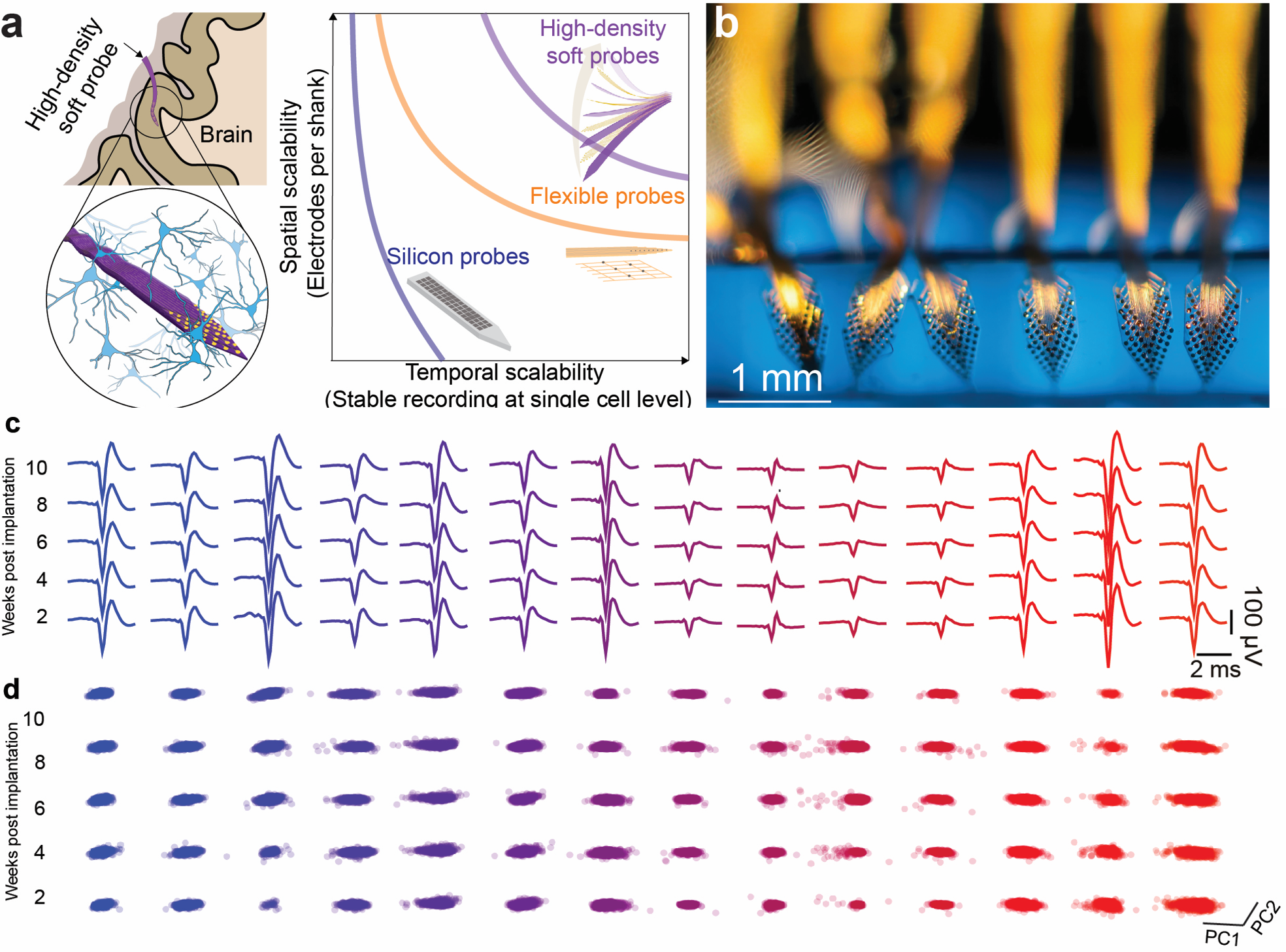Soft bioelectronics for in vivo neural probes

Existing high-resolution neural recording devices cannot achieve simultaneous scalability on both spatial and temporal levels due to a trade-off between sensor density and mechanical flexibility. A team lead by Liu, Bertoldi, Kozinsky, and Suo have introduced a three-dimensional (3D) stacking implantable electronic platform, based on perfluorinated dielectric elastomers and tissue-level soft multilayer electrodes, that enables spatiotemporally scalable single-cell neural electrophysiology. The 3D integrated multilayer soft electrode array retains tissue-level flexibility, reduces chronic immune responses when implanted in neural tissues, and reliably tracks electrical activity in a mouse brain over months.
Article:
A long-lasting neural probe
Researchers develop implantable device that can record a collection of individual neurons over months
Publication:
Le Floch, P., S. Zhao, R. Liu, N. Molinari, E. Medina, H. Shen, Z. Wang, J. Kim, H. Sheng, S. Partarrieu, W. Wang, C. Sessler, G. Zhang, H. Park, X. Gong, A. Spencer, J. Lee, T. Ye, X. Tang, X. Wang, K. Bertoldi, N. Lu, B. Kozinsky, Z. Suo, and J. Liu, "3D spatiotemporally scalable in vivo neural probes based on fluorinated elastomers," Nature Nanotechnology 19, 319–329 (2024) ![]()
![]()
Jia Liu (Bioengineering), Katia Bertoldi (Mechanical Engineering), Boris Kozinsky (Material Science), and Zhigang Suo (Material Science & Mechanical Engineering)
2023-2024 Harvard MRSEC (DMR-2011754)
